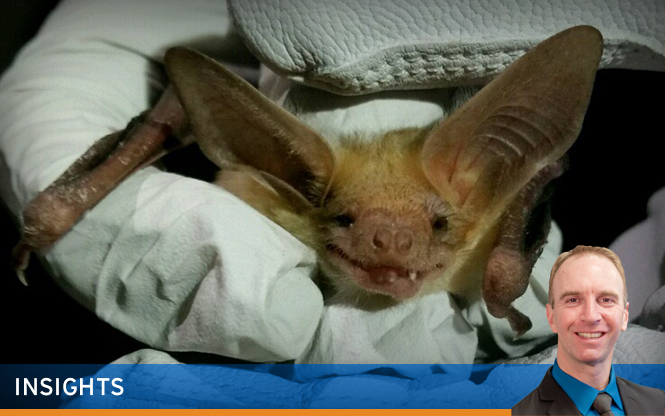
Despite what most people think, bats are found everywhere. From the remote regions of the desert to populated city centers, bats roost in trees, buildings, bridges, and culverts. More than likely, those reading this blog will have to deal with bats on their projects at some point in their career. Working around bats, while staying compliant with state laws, does not have to be a major constraint on any project. But, as with any obstacle, the more you know, the better prepared you will be and the fewer problems, delays, and additional costs incurred.
WHY YOU SHOULD CARE
Bats are one of the most misunderstood and most economically important wild animal in the United States. In North America, bats prevent losses to agricultural crops of more than $3.7 billion per year by consuming insect pests. Bats directly benefit crops from corn and cotton to hops and agave by controlling insect pests and by pollinating plants (no bats, no tequila). In urban areas, they can be an important source of insect vector control. Despite their economic and ecological importance, bats face unprecedented threats across North America and are nearing extinction in some areas. Some of these threats, such as white nose syndrome, are pretty bleak, but many of these threats can be mitigated with education, sound project design, and good project planning.
TIMING IS EVERYTHING
State and local agencies have been giving much more attention to bats by incorporating bat protection measures into their permit conditions and project conditions of approval. Many of these measures focus on avoiding maternity roosts, cavities, and crevices where flightless pups are born and raised in the spring and summer months. For example, if you have a maternity roost on your site that can’t be avoided, your permit or approval conditions may have you temporarily close that roost while you work. You might be thinking, “Not a problem. We can have the winning bidder contract a biologist to exclude the roost before construction.” Unfortunately, bat roosts can only be excluded during a narrow calendar window in the fall. If the winning bidder is selected after that, approving agencies won’t allow construction to move forward until that window opens up again, which could be up to a nine-month delay!
KEEPING YOUR PROJECT MOVING FORWARD
1) Get advice early in the planning process. Most projects require biologists get involved at some point, but the earlier in the process you engage them, the more scheduling surprises you can avoid. This is especially true for projects with roosting bat issues.
2) Use only qualified bat biologists. Getting it done right the first time will save you time, money, and the headache of dealing with violation fines.
3) When possible, aim to start construction activities in the late fall. Similar to bird nesting, bats raise their flightless pups in the spring and summer.
If you have questions about bats and how to deal with them on your project, contact our biologists at Psomas.
By Steve Norton